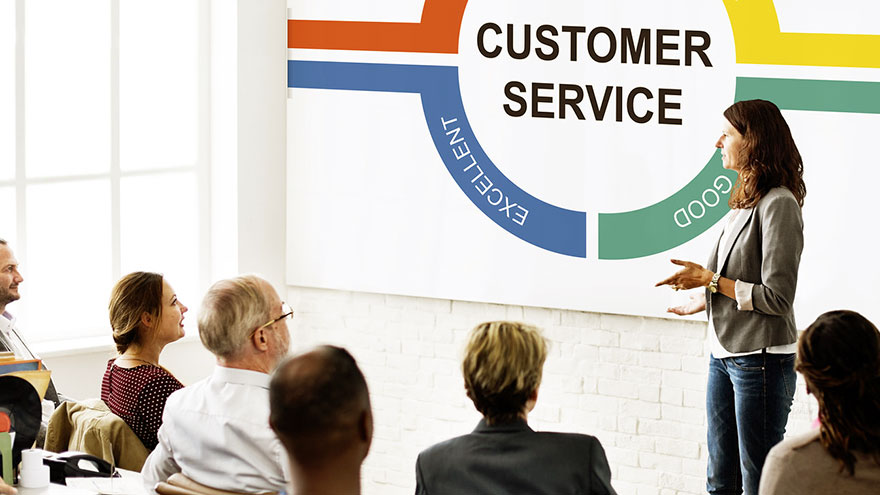Fun Customer Service Training
Employees’ attitudes can directly impact a business. Customers treated carelessly by frustrated workers or with indifference probably won’t return.
One fun way to get your employees to recognize and adopt good customer service skills is through scenarios adapted from “The Big Book of Customer Service Training Games” by Peggy Carlaw. Customer service training can be lighthearted and meaningful at the same time.

Perspective
It’s helpful to have employees put themselves in the customer’s shoes. The following game encourages employees to remember what it’s like to appreciate good customer service:
Give each one a piece of paper and a pen. Ask him or her to pretend they are one of their own customers, which they may take from a real or hypothetical experience. Have them write themselves a letter from the customer’s perspective.
The letter must include three positive aspects of the employee’s behavior that made a good impression on the customer. If they are comfortable, have each employee read his letter out loud to the group to start open discussion about good customer service.
Communication
While talking to a customer, an employee’s hesitation, jargon, mumbling or slang may be off-putting. The employee is often unaware he or she is doing so, however. In the next exercise, the leader pretends to be a customer speaking with each employee and the talks are recorded.
Then play back the recordings to allow the employees to hear themselves. They should pay close attention to how they interact with customers, answer their questions, and whether they use appropriate language that is friendly and easy to understand.
Impressions
Customers form opinions of a business based on employee interactions, but bad customer service may result from an employee’s impressions of a customer. To make employees aware of this, the training leader hands out a dozen pictures of random people, allowing each employee to have one.
The pictures must depict people of all ages, genders, styles, and appearances. The leader goes around the room and asks each employee for his first impressions of the person in the picture he’s holding. The leader discusses the fault in judging someone based on appearance and how employees can ensure they treat everyone equally.
Motivation
Training must be done with lightheartedness; no one can be forced to be welcoming, kind or hospitable. Employees that deliver good customer service must first be happy with their work environment, their co-workers, their managers and the treatment they receive.
Create a forum for employees to express their complaints and concerns and make the process known to them.
Teambuilding
Good customer service training will start with teambuilding. Personal or structural frustrations at work create a negative environment for customers to walk into. Make the first session of customer service training about employee teambuilding.
“The Big Book of Customer Service Training Games” includes such games aimred at creating a happy environment for workers. Happy workers go a long way toward happy — and repeat — customers.
You Might Also Like :: Define Quality Customer Service

